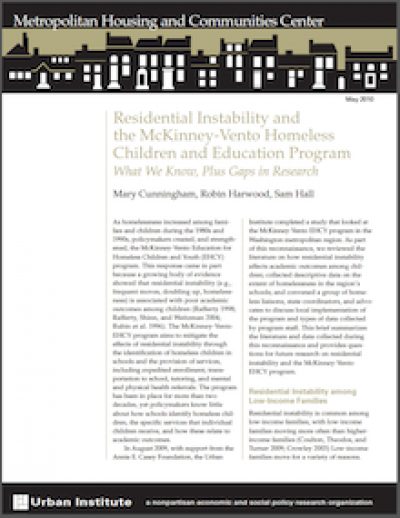A Growing Issue
During the 2007 to 2008 academic year, public schools reported 794,617 homeless children — a 17% jump relative to just one year prior.

Children who are homeless face a wide range of challenges. These hurdles can follow the children into the classroom each day and lead to lower test scores, broken bonds and a fractured education. Enter a policy-driven solution, called the McKinney-Vento Education for Homeless Children and Youth program, which promises services and support to help homeless students succeed. This report spells out what we know — and all that we do not know — about the program’s impact on academic outcomes since its creation in 1987. It ends with an urgent call to fill in an array of research gaps so that policymakers can make informed decisions about the program's future and its capacity to ease the burden of residential instability on today’s youth.
Today’s tenuous economic climate has left many Americans homeless or bouncing from one stopgap solution to the next. This volatility invokes a sense of urgency for policymakers and administrators seeking to understand the effectiveness of the decades-old McKinney-Vento Education for Homeless Children and Youth (EHCY) program.